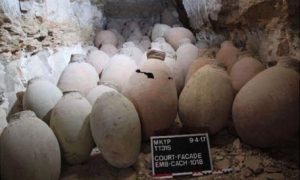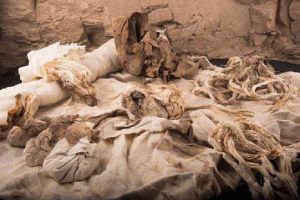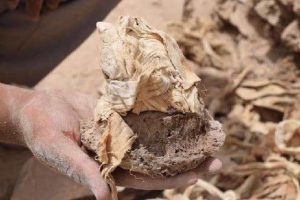Embalming materials used by Ipi, vizier and overseer of Thebes during the reign of King Amenemhat I (1976–1956 BC) in the early 20th Dynasty, have been rediscovered in his tomb at Deir el-Bahari on Luxor’s west bank, Egypt.

Archaeologists uncovered over 50 clay jars filled with embalming materials for the mummification of the ancient Egyptian vizier Ipi during the cleaning of the courtyard under his tomb. The jars were first discovered in 1921 and 1922 by American Egyptologist Herbert Winlock inside an auxiliary chamber in the north-East corner of the upper courtyard of Ipi’s tomb, where they were left as recently rediscovered.

The courtyard has been buried in sand over the years. The jars hold equipment such as bandages, oils and salts, which were used by embalmers in mummification, as well as jars, bowls, scrapers, and a mummification board decorated with ankh-signs. There were also other types of cloth, rags, and pieces of slender wrappings designed to cover fingers, toes, and other parts of the vizier’s corpse. The deposit also contained around 300 sacks of natron salt, oils, sand, and other substances, as well as jar stoppers and a scraper.

According to the researchers the identification of these materials is of great importance for understanding the mummification techniques used in the early Middle Kingdom and the assessment of the kinds of items, tools, and substances involved in the process of embalming. The deposit of the mummification materials used for Ipi included jars with potmarks and other types of inscriptions, various shrouds and four-metre-long linen sheets, shawls, and rolls of wide bandages.

Among the most outstanding pieces of the collection are the Nile clay and marl jars, some with potmarks and hieratic writing, various large bandages six metres in length, as well as a shroud used for covering the body of the vizier Ipi, and a fringed shawl 10 metres in length.
(after Middle Kingdom Theban Project & Ahram Online)